HSBC 2006 Annual Report Download - page 85
Download and view the complete annual report
Please find page 85 of the 2006 HSBC annual report below. You can navigate through the pages in the report by either clicking on the pages listed below, or by using the keyword search tool below to find specific information within the annual report.-
 1
1 -
 2
2 -
 3
3 -
 4
4 -
 5
5 -
 6
6 -
 7
7 -
 8
8 -
 9
9 -
 10
10 -
 11
11 -
 12
12 -
 13
13 -
 14
14 -
 15
15 -
 16
16 -
 17
17 -
 18
18 -
 19
19 -
 20
20 -
 21
21 -
 22
22 -
 23
23 -
 24
24 -
 25
25 -
 26
26 -
 27
27 -
 28
28 -
 29
29 -
 30
30 -
 31
31 -
 32
32 -
 33
33 -
 34
34 -
 35
35 -
 36
36 -
 37
37 -
 38
38 -
 39
39 -
 40
40 -
 41
41 -
 42
42 -
 43
43 -
 44
44 -
 45
45 -
 46
46 -
 47
47 -
 48
48 -
 49
49 -
 50
50 -
 51
51 -
 52
52 -
 53
53 -
 54
54 -
 55
55 -
 56
56 -
 57
57 -
 58
58 -
 59
59 -
 60
60 -
 61
61 -
 62
62 -
 63
63 -
 64
64 -
 65
65 -
 66
66 -
 67
67 -
 68
68 -
 69
69 -
 70
70 -
 71
71 -
 72
72 -
 73
73 -
 74
74 -
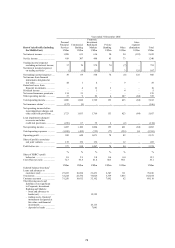 75
75 -
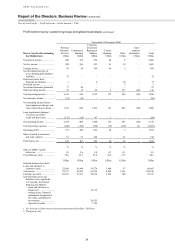 76
76 -
 77
77 -
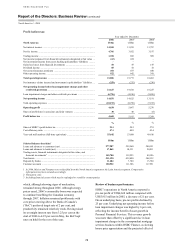 78
78 -
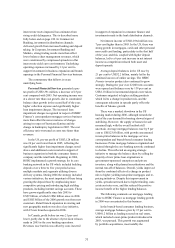 79
79 -
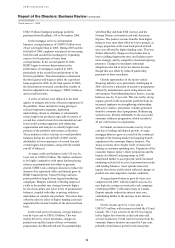 80
80 -
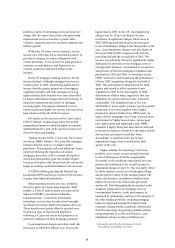 81
81 -
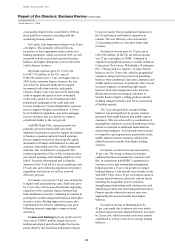 82
82 -
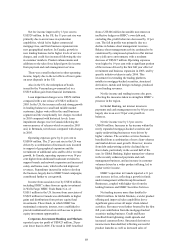 83
83 -
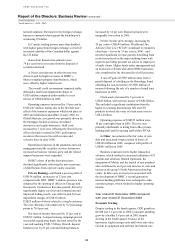 84
84 -
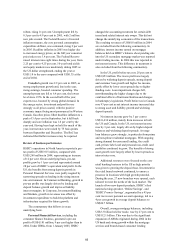 85
85 -
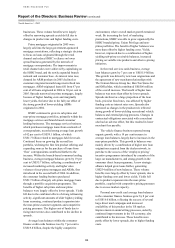 86
86 -
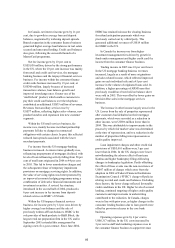 87
87 -
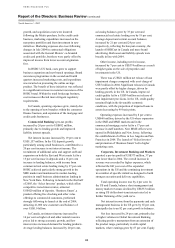 88
88 -
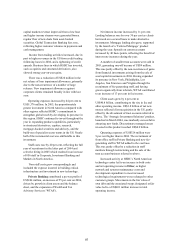 89
89 -
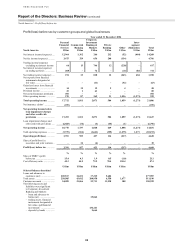 90
90 -
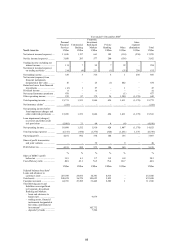 91
91 -
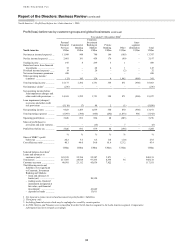 92
92 -
 93
93 -
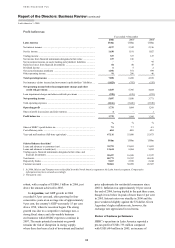 94
94 -
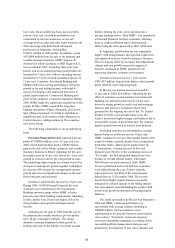 95
95 -
 96
96 -
 97
97 -
 98
98 -
 99
99 -
 100
100 -
 101
101 -
 102
102 -
 103
103 -
 104
104 -
 105
105 -
 106
106 -
 107
107 -
 108
108 -
 109
109 -
 110
110 -
 111
111 -
 112
112 -
 113
113 -
 114
114 -
 115
115 -
 116
116 -
 117
117 -
 118
118 -
 119
119 -
 120
120 -
 121
121 -
 122
122 -
 123
123 -
 124
124 -
 125
125 -
 126
126 -
 127
127 -
 128
128 -
 129
129 -
 130
130 -
 131
131 -
 132
132 -
 133
133 -
 134
134 -
 135
135 -
 136
136 -
 137
137 -
 138
138 -
 139
139 -
 140
140 -
 141
141 -
 142
142 -
 143
143 -
 144
144 -
 145
145 -
 146
146 -
 147
147 -
 148
148 -
 149
149 -
 150
150 -
 151
151 -
 152
152 -
 153
153 -
 154
154 -
 155
155 -
 156
156 -
 157
157 -
 158
158 -
 159
159 -
 160
160 -
 161
161 -
 162
162 -
 163
163 -
 164
164 -
 165
165 -
 166
166 -
 167
167 -
 168
168 -
 169
169 -
 170
170 -
 171
171 -
 172
172 -
 173
173 -
 174
174 -
 175
175 -
 176
176 -
 177
177 -
 178
178 -
 179
179 -
 180
180 -
 181
181 -
 182
182 -
 183
183 -
 184
184 -
 185
185 -
 186
186 -
 187
187 -
 188
188 -
 189
189 -
 190
190 -
 191
191 -
 192
192 -
 193
193 -
 194
194 -
 195
195 -
 196
196 -
 197
197 -
 198
198 -
 199
199 -
 200
200 -
 201
201 -
 202
202 -
 203
203 -
 204
204 -
 205
205 -
 206
206 -
 207
207 -
 208
208 -
 209
209 -
 210
210 -
 211
211 -
 212
212 -
 213
213 -
 214
214 -
 215
215 -
 216
216 -
 217
217 -
 218
218 -
 219
219 -
 220
220 -
 221
221 -
 222
222 -
 223
223 -
 224
224 -
 225
225 -
 226
226 -
 227
227 -
 228
228 -
 229
229 -
 230
230 -
 231
231 -
 232
232 -
 233
233 -
 234
234 -
 235
235 -
 236
236 -
 237
237 -
 238
238 -
 239
239 -
 240
240 -
 241
241 -
 242
242 -
 243
243 -
 244
244 -
 245
245 -
 246
246 -
 247
247 -
 248
248 -
 249
249 -
 250
250 -
 251
251 -
 252
252 -
 253
253 -
 254
254 -
 255
255 -
 256
256 -
 257
257 -
 258
258 -
 259
259 -
 260
260 -
 261
261 -
 262
262 -
 263
263 -
 264
264 -
 265
265 -
 266
266 -
 267
267 -
 268
268 -
 269
269 -
 270
270 -
 271
271 -
 272
272 -
 273
273 -
 274
274 -
 275
275 -
 276
276 -
 277
277 -
 278
278 -
 279
279 -
 280
280 -
 281
281 -
 282
282 -
 283
283 -
 284
284 -
 285
285 -
 286
286 -
 287
287 -
 288
288 -
 289
289 -
 290
290 -
 291
291 -
 292
292 -
 293
293 -
 294
294 -
 295
295 -
 296
296 -
 297
297 -
 298
298 -
 299
299 -
 300
300 -
 301
301 -
 302
302 -
 303
303 -
 304
304 -
 305
305 -
 306
306 -
 307
307 -
 308
308 -
 309
309 -
 310
310 -
 311
311 -
 312
312 -
 313
313 -
 314
314 -
 315
315 -
 316
316 -
 317
317 -
 318
318 -
 319
319 -
 320
320 -
 321
321 -
 322
322 -
 323
323 -
 324
324 -
 325
325 -
 326
326 -
 327
327 -
 328
328 -
 329
329 -
 330
330 -
 331
331 -
 332
332 -
 333
333 -
 334
334 -
 335
335 -
 336
336 -
 337
337 -
 338
338 -
 339
339 -
 340
340 -
 341
341 -
 342
342 -
 343
343 -
 344
344 -
 345
345 -
 346
346 -
 347
347 -
 348
348 -
 349
349 -
 350
350 -
 351
351 -
 352
352 -
 353
353 -
 354
354 -
 355
355 -
 356
356 -
 357
357 -
 358
358 -
 359
359 -
 360
360 -
 361
361 -
 362
362 -
 363
363 -
 364
364 -
 365
365 -
 366
366 -
 367
367 -
 368
368 -
 369
369 -
 370
370 -
 371
371 -
 372
372 -
 373
373 -
 374
374 -
 375
375 -
 376
376 -
 377
377 -
 378
378 -
 379
379 -
 380
380 -
 381
381 -
 382
382 -
 383
383 -
 384
384 -
 385
385 -
 386
386 -
 387
387 -
 388
388 -
 389
389 -
 390
390 -
 391
391 -
 392
392 -
 393
393 -
 394
394 -
 395
395 -
 396
396 -
 397
397 -
 398
398 -
 399
399 -
 400
400 -
 401
401 -
 402
402 -
 403
403 -
 404
404 -
 405
405 -
 406
406 -
 407
407 -
 408
408 -
 409
409 -
 410
410 -
 411
411 -
 412
412 -
 413
413 -
 414
414 -
 415
415 -
 416
416 -
 417
417 -
 418
418 -
 419
419 -
 420
420 -
 421
421 -
 422
422 -
 423
423 -
 424
424 -
 425
425 -
 426
426 -
 427
427 -
 428
428 -
 429
429 -
 430
430 -
 431
431 -
 432
432 -
 433
433 -
 434
434 -
 435
435 -
 436
436 -
 437
437 -
 438
438 -
 439
439 -
 440
440 -
 441
441 -
 442
442 -
 443
443 -
 444
444 -
 445
445 -
 446
446 -
 447
447 -
 448
448 -
 449
449 -
 450
450 -
 451
451 -
 452
452 -
 453
453 -
 454
454 -
 455
455 -
 456
456 -
 457
457 -
 458
458
 |
 |
83
robust, rising 11 per cent. Unemployment fell by
0.5 per cent to 4.9 per cent in 2005, with 2 million
new jobs created. The Federal Reserve’s favoured
inflation measure, the core personal consumption
expenditure deflator, was contained, rising 2 per cent
in 2005. Headline inflation in 2005 was higher due
to increased energy prices, as the full year consumer
price index rose 3.4 per cent. The Federal Reserve
raised interest rates eight times during the year, from
2.25 per cent to 4.25 per cent. 10-year bond yields
and equity markets rose moderately during 2005 as
the US dollar strengthened, ending the year at
US$1.18 to the euro compared with US$1.35 at the
end of 2004.
Canada’s growth was 2.9 per cent in 2005, as
strong employment growth and, late in the year,
rising earnings, boosted consumer spending. The
unemployment rate fell to 6.4 per cent, the lowest
level since 1976. In the second half of the year,
exports rose, boosted by strong global demand. In
the energy sector, investment and profits rose
strongly as oil prices soared, with the positive
economic impact being most pronounced in Western
Canada. Gasoline prices lifted headline inflation to a
peak of 3.4 per cent in September, but it fell back
sharply and core inflation was 1.6 per cent by the
year-end. Having been kept on hold for much of the
year, interest rates were raised by 75 basis points
between September and December. The BoC has
indicated that further increases may be required.
Review of business performance
HSBC’s operations in North America reported a pre-
tax profit of US$5,915 million, compared with
US$5,268 million in 2004, representing an increase
of 12 per cent. On an underlying basis, pre-tax
profits grew by 11 per cent and represented around
28 per cent of HSBC’s equivalent total profit. In the
US, the benefits from strong deposit growth in
Personal Financial Services were partly negated by
narrowing spreads on lending in the rising interest
rate environment. In Commercial Banking, growth in
pre-tax profits was largely driven by lending and
deposit balance growth and improved liability
interest margins. In Corporate, Investment Banking
and Markets, growth in revenues was offset by
investment expenditure to build the platform and
infrastructure required for future growth.
The commentary that follows is on an
underlying basis.
Personal Financial Services, including the
consumer finance business, generated a pre-tax
profit of US$4,181 million, 9 per cent higher than in
2004. Under IFRSs, from 1 January 2005, HSBC
changed the accounting treatment for certain debt
issued and related interest rate swaps. This did not
change the underlying economics of the transactions.
The resulting revenues of US$618 million in 2004
are excluded from the following commentary. In
addition, interest income earned on mortgage
balances held on HSBC’s balance sheet pending sale
into the US secondary mortgage market was reported
under trading income. In 2004 this was reported in
net interest income. This difference in treatment is
also excluded from the following commentary.
In the US, profit before tax rose 28 per cent to
US$3,853 million. The rise in profit was largely
driven by widening deposit spreads, strong deposit
and customer loan growth and higher fee income,
partly offset by lower asset spreads due to higher
funding costs. Loan impairment charges fell,
notwithstanding the higher charges due to the
combined effects of hurricane Katrina and changes
in bankruptcy legislation. Profit before tax in Canada
rose 93 per cent as net interest income increased due
to strong asset and liability growth and widening
deposit spreads.
Net interest income grew by 3 per cent to
US$11,636 million, mainly from increases in both
the US and Canada. In the US, net interest income
rose by 3 per cent, largely driven by higher deposit
balances and widening deposit spreads. Average
loan balances grew strongly, in particular from prime
and non-prime residential mortgages. With ongoing
strong demand for unsecured lending, the credit
card, private label card and personal non-credit card
portfolios continued to grow. The benefits of strong
asset growth were largely offset by lower spreads as
interest rates rose.
Additional resources were focused on the core
retail banking business in the US as high priority
was given to growing the deposit base. Investment in
the retail branch network continued, to ensure a
presence in locations with high growth potential.
During the year, 27 new branches were opened, each
tailored to meet the needs of the local market. The
launch of two new deposit products, HSBC’s first
national savings product, ‘Online Savings’, and
‘HSBC Premier Savings’, augmented by a 45 per
cent rise in new personal account openings, led to a
4 per cent growth in average deposit balances to
US$26.7 billion.
Overall, average mortgage balances, including
US$3.3 billion held for resale, rose by 27 per cent to
US$112.1 billion. This was due to the significant
expansion of ARMs originated during 2004 in the
US bank and strong growth within the mortgage
services and branch-based consumer lending
